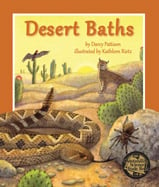Alignment to Standards for KY

| Grade | Number | Standard |
|---|---|---|
| 4 | SC-04-2.3.4b | The Sun appears to move across the sky in the same way every day, but the Sunês apparent path changes slowly over seasons. |
| 4 | SC-04-3.4.1a | compare the different structures and functions of plants and animals that contribute to the growth, survival and reproduction of the organisms; |
| 4 | SC-04-4.7.1a | patterns of evidence related to the survival and reproductive success of organisms in particular environments. |
| 4 | SC-04-4.7.1b | Distinct environments support the lives of different types of organisms. |
| 4 | SC-4-I-U-2 | environmental relationships extend beyond food (e.g. shelter, seed transport). |
| Primary | SC-EP-2.3.3 | describe the properties, locations and real or apparent movements of objects in the sky (Sun, moon). Objects in the sky have properties, locations and real or apparent movements that can be observed and described. Observational data, pattern |
| Primary | SC-EP-2.3.4 | describe the movement of the sun in the sky using evidence of interactions of the sun with the earth (e.g., shadows, position of sun relative to horizon) to identify patterns of movement. |
| Primary | SC-EP-2.3.4b | The Sun appears to move across the sky in the same way every day, but the Sunês apparent path changes slowly over seasons. |
| Primary | SC-EP-3.4.3 | Students will describe the basic structures and related functions of plants and animals that contribute to growth, reproduction and survival. |
| Primary | SC-EP-3.4.3a | Each plant or animal has observable structures that serve different functions in growth, survival and reproduction. For example, humans have distinct body structures for walking, holding, seeing and talking. These observable structures should be explored |
| Primary | SC-P-BC-U-2 | understand that living things are found almost everywhere on our planet, but organisms living in one place may be different from those found somewhere else. |
| Primary | SC-P-EU-U-4 | the sun can only be seen in the daytime. The moon can sometimes be seen during the day and sometimes be seen at night and its shape changes in a predictable pattern. |
| Primary | SC-P-I-S-1 | characteristics of an ecosystem |
| Primary | SC-P-I-S-2 | how organisms depend on their environments |
| Primary | SC-P-I-U-1 | the world has many different environments. Distinct environments support the lives of different types of organisms. |
| Primary | SC-P-UD-S-3 | Students will investigate adaptations that enable animals and plants to grow, reproduce and survive (e.g., movements, body coverings, method of reproduction) |
| Primary | SC-P-UD-S-4 | Students will analyze structures of plants and animals to make inferences about the types of environments for which they are suited |
| Primary | SC-P-UD-U-2 | plants and animals have features that help them live in different environments. |
| Primary | SC-P-UD-U-3 | some animals are alike in the way they look and in the things they do, and others are very different from one another. |
| Primary | SS-EP-4.1.1 | Students will use geographic tools (e.g., maps, globes, mental maps, charts, graphs) to locate and describe familiar places at home, school and the community. |
| Primary | SS-EP-4.1.2 | use geographic tools to identify major landforms (e.g., continents, mountain ranges), bodies of water (e.g., oceans, major rivers) and natural resources on Earthês surface and use relative location. |
| Primary | SS-EP-4.2.1 | places on Earthês surface by their physical characteristics (e.g., climate, landforms, bodies of water). |
| Primary | SS-P,4&5-G-U-1 | use of geographic tools (e.g., maps, globes, charts, graphs) and mental maps help interpret information, understand and analyze patterns, spatial data and geographic issues. |
| Primary | SS-P-G-S-1c | identify major landforms (e.g., continents, mountain ranges) and major bodies of water (e.g., oceans, rivers) |
| Primary | SS-P-G-S-2 | Students will investigate the Earthês surface using print and non-print sources (e.g., books, magazines, films, Internet, geographic tools): |
| Primary | SS-P-G-S-2a | locate and describe places (e.g., local environments, different habitats) using their physical characteristics (e.g., landforms, bodies of water) |